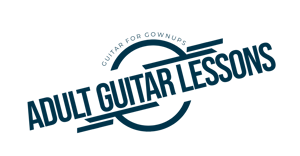One of the most daunting tasks for the new guitar player is the study of scales. It doesn’t take long to realize that there is a seemingly endless supply of scales to be learned on the guitar, and the prospect of learning them all can be a bit overwhelming. For the beginning guitarist attempting to sift through the plethora of scales and modes on the guitar, and trying to figure out where to get started, a good place would be the “major” scale.
Learning this scale on the guitar is a great place to start in the early days for several reasons.
1. By learning the notes of the major scale – and more particularly, the “pattern” of those notes on the fret board – you will have the foundational knowledge for a number of other scales that you will want to learn later on.
Many of these new scales will be built by simply adding or subtracting one or more notes from this scale.
2. By knowing the notes of the major scale you will have the core knowledge you need to determine the root notes of various chord progressions. These progressions are typically referred to in terms of their scale steps based on it.
For example: I, IV, V (1,4,5) chord progressions
3. Every major scale has what’s known as a “relative minor” scale.
Although space does not permit a full discussion on the relative minor, in simple terms the relative minor scale for any major scale begins on the 6th step of the major parent scale. For example, the relative minor of C major is A minor, because “A” is the 6th step of the scale.
At this point it’s not overly important to know all the theory behind the relative minor, it’s only important to know this: The notes of the “major” scale, and its “relative minor” scale are identical. They are exactly the same!
To continue with the previous example, the notes of the “C” major scale are exactly the same as the notes of the “A minor” scale. So in this regards, when you learn the major scale, you actually get 2 scales “for the price of one”! Practice this for yourself. Take any major scale and simply count the scale steps until you get to 6.
That 6th step is the root note for the relative minor scale.
So when you are playing the notes in the major scale you are, at the same time, also playing the notes of the relative minor scale.
Here are a few other examples of a major scale and its relative minor scale:
G major = E minor
D major = B minor
A major = F# minor
And so on…
As you can see, there are a number of good reasons to learn the major scale. Start working on learning it today. Work on visualizing the “patterns” of the scale on the guitar neck, and learn to play the major scale in all the pattern positions and learn how to play it in all the keys.
You will be glad you did!



